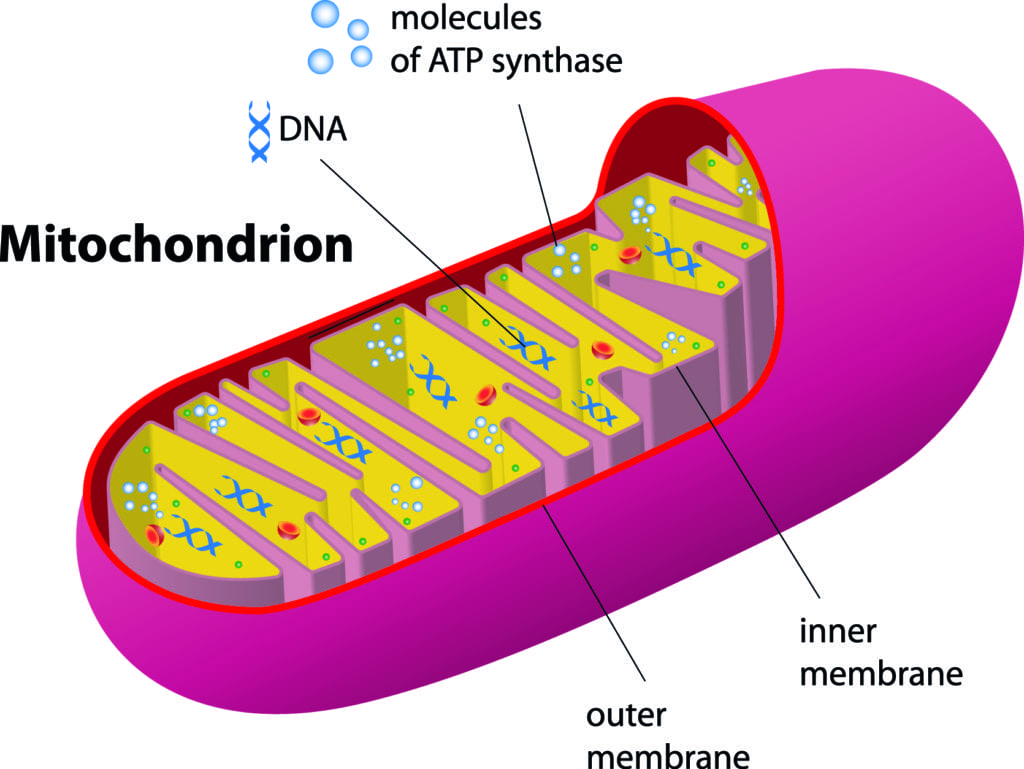Converting Food to Usable Energy (June 8)


Every microsecond, every cell in your body is converting food to usable energy in order to run the chemical processes of your body. The primary source of the cell’s energy is a chemical called adenosine triphosphate (ATP). Your body literally makes and consumes an amount of ATP equivalent to the entire weight of your body each day. This ATP is then converted into the various chemicals and components needed to keep your body operating. So, where does all this ATP come from? Inside the mitochondria within each of our over ten trillion cells are little spinning molecular motors that operate at close to 99.99% efficiency (gasoline motors operate at about 35% efficiency.) These ATP generating motors are so small that 100,000 of them would have to be lined up end to end to reach across 1 millimeter. Also, they spin at 1000 RPM while spewing out ATP molecules.
But where do these motors come from?
- These motors are made using information coming from the DNA molecule.
- In order to open the DNA molecule, energy from ATP is needed.
- In order to make the ATP, the motor is needed.
The information needed to make the motors is in DNA. It takes the motor’s ATP to open the DNA, but we can’t make the ATP unless the information on how to make the motor is provided. Complicated isn’t it! All the parts, processes, and instructions needed to be present and fully functioning from the beginning.
The more we learn about the operation of our bodies, the more we see that an incredibly intelligent Designer made every cell within our bodies.
Psalm 145:21
Reference
Sarfati, Jonathan. July 15, 2015. CMI conference lecture. Myrtle Beach, N.C.
